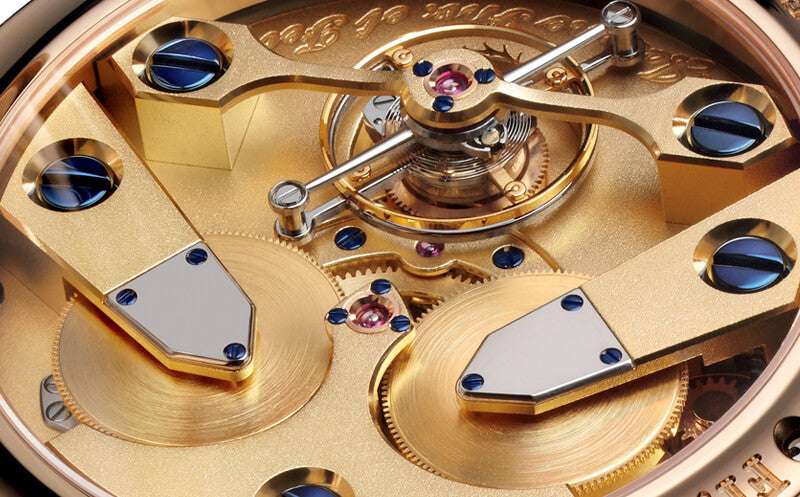

From the Royal Oak Tourbillon to the Vacheron Constantin Overseas Tourbillon, what is it about the tourbillon movement that’s got watch collectors falling over each other - even despite the juicy price tags?
Pronunciation: “Tour bee yon”.
What is a tourbillon movement?
A fight against physics.
Put simply, a tourbillon movement is a mechanism AKA a complication found in the movements of some high-end watches. But there’s really nothing simple about it.
The tourbillon was conceptualised as a way to eliminate positional error in a timepiece. This error happens when a watch is in one position for long enough for gravity to get to work on the balance wheel. Over time, this impacts the accuracy of the timepiece.
Enter the tourbillon, which fights the effects of gravity to keep a watch ticking as it should.
How does a tourbillon movement work?
Imagine a mechanical watch’s balance wheel, which twitches back and forth to keep time. A tourbillon movement takes that general concept and ups the ante. A lot.
The movement works because some parts of a watch’s internal mechanics (the balance wheel and escapement) live in a rotating cage. As the cage rotates (usually at a rate of 1RPM), it counteracts the drag effect of gravity to help a watch keep good time.
How to spot a tourbillon watch
You’ll often see a tourbillon watch coming by its price tag, followed by a deep fascination from anyone who looks at it for more than a couple of seconds.
Tourbillon watches are often confused with open-heart watches that display the balance right there on the dial. That’s because, in a similar manner, a tourbillon watch is typically skeletonised to show the movement.
The difference between a tourbillon watch and a mechanical watch is the spiral motion of the movement of the tourbillon. In fact, that’s where the name comes from: Tourbillon means “whirlwind” in French. If you look in the window at the movement, you’ll see a soft dance between the rotating cage and oscillating balance wheel.
Where did the tourbillion come from?
Invented in 1795. Patented in 1801.
Abraham-Louis Breguet has done a lot for the watch industry. During his lifetime, he’s invented more than one revolutionary device - from the first wristwatch to self-winding watches to tourbillon movements.
Breguet’s lightbulb moment sparked in an era of wall clocks and pocket watches. Since pocket watches typically spent lots of time stuck in someone’s pocket or laid out on a table, there was a strain on the hairspring inside the escapement. This caused it to oscillate at an irregular rate and dashed the accuracy of watches.
Breguet realised that an escapement that was constantly in a state of motion was needed and got to work creating one.
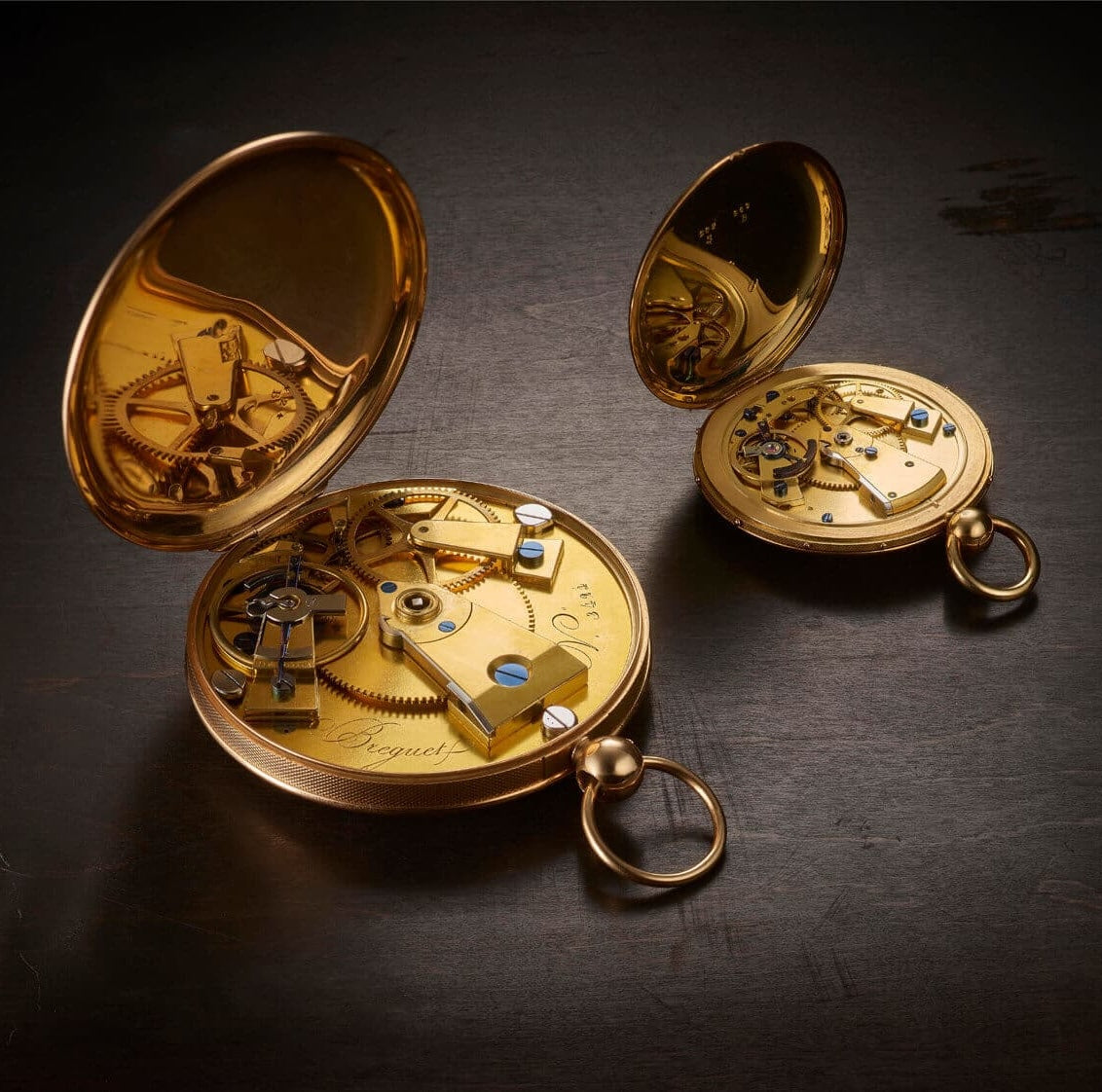
1795
Abraham-Louis Breguet invents the rotating mechanism.
1801
Breguet patents the “Tourbillon”.
1920
Alfred Helwig, a watchmaker at Glashütte Original, invents the flying tourbillon.
1947
Omega creates its first-ever tourbillon watch (the Omega 30i) after a long period when the mechanism was largely forgotten about.
1984
Franck Muller claims he pioneered the concept of displaying a tourbillon proudly on a watch’s dial.
What’s the benefit of a tourbillon? Are there any benefits beyond aesthetics?
Dazzling & controversial all at once.
The tourbillon movement is mesmerising but it’s not without its controversy.
Yes - it was revolutionary for the stagnant pocket watch and was originally created to improve the performance of a timepiece. But it’s difficult to translate that to the modern-day. Wristwatches of today naturally offer the gravity-fighting effect of the tourbillon mechanism because the wearer is almost always on the move.
So, does the tourbillon make a watch more accurate? Apparently not. Tourbillions have proved to be no more accurate than traditional escapements (that’s the piece that regulates timekeeping; it creates the ticking sound you recognise). In some cases, traditional mechanisms actually come out on top for accuracy.
(As a side note, a Greubel Forsey Double Tourbillon Technique was the overall champion in a 2011 accuracy competition, Concours International de Chronométrie. It won by quite a stretch, but this is too small a sample size to categorically say tourbillon watches are more accurate.)
So, despite it being widely regarded as more of a hindrance than a help, functionally speaking, the tourbillon movement still has a place in modern watchmaking. If nothing else, it showcases a watchmaker’s skill and artistry and is best-in-class at making sure a watch stands out from the crowd.
Beauty and bragging rights… What more do you need?
“A tourbillon movement is everything I love about the watch industry. We know it is no more accurate on a wristwatch, but watchmakers continue to innovate with it; despite its cost. It is a difficult movement to make, and manufacturers do it just because they can… and for me that is worth celebrating; the unwavering determination and history from watchmakers.”
Frankie Mardell
8 iconic tourbillon watches to get on your radar
-
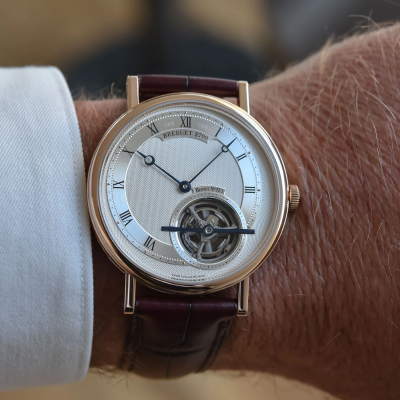
Breguet Classique Tourbillon Extra-Plat Anniversaire 5365
The inventor of tourbillon watches, of course, remains a master. Celebrating the 220th anniversary of the tourbillon, this watch incorporates an eye-catching twist on a classic dress watch: a tourbillon placement at 5 o’clock.
-
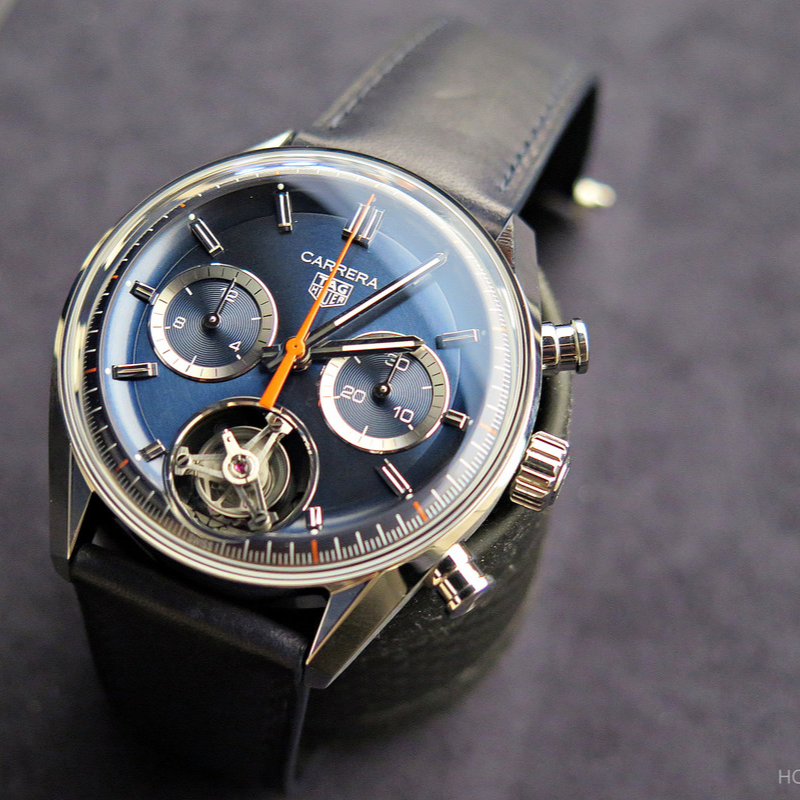
TAG Heuer Carrera Chronograph Tourbillon ‘Glassbox’
We can call this “affordable” at a push. TAG creates some of the cheapest tourbillons in the luxury watch space, with the Glassbox starting at around £13,500. We like the way the tourbillon blends beautifully with the Carrera’s classic design.
-
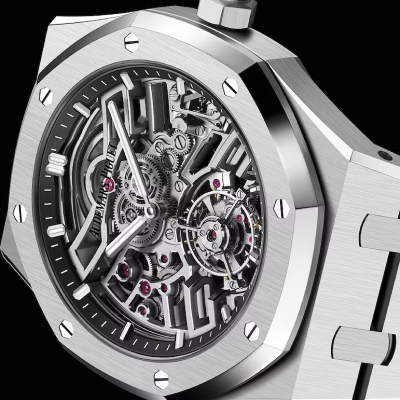
Audemars Piguet Royal Oak Self-Winding Flying Tourbillon Openworked
Conceptualised for the Royal Oak’s 50th anniversary, The Royal Oak Tourbillon showcases a flying tourbillon in a sporty stainless steel case. Elegant and on-trend, peek through an open window at the back to see a “floating” tourbillon. One of Trilogy’s all-time favourite watches.
-
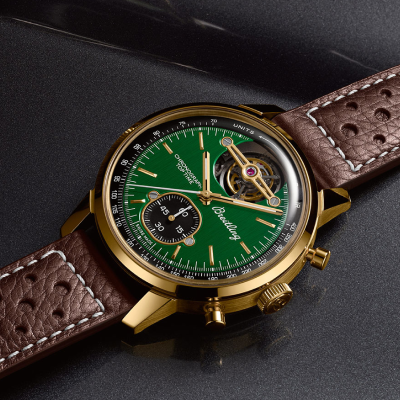
Breitling Top Time B21 Tourbillon Ford Mustang
Inspired by the Ford Mustang, this evolution of the Breitling Classic Car series sees the manufacturer add a tourbillon. This piece is all about the design and the engine, just like the car it represents.
-
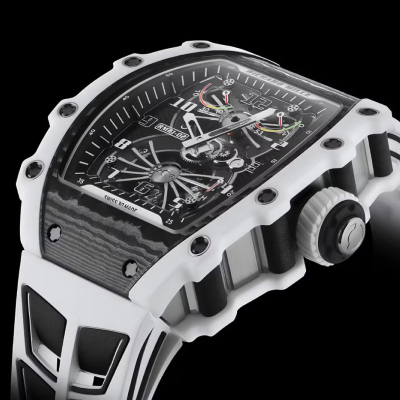
Richard Mille RM 21-02 Tourbillon Aerodyne
The Tourbillon Aerodyne debuted in 2023 driven by the ambition of extreme lightness. Richard Mille got there by constructing on a honeycomb structure, pushing demand by limiting the Aerodyne to 50 pieces.
-
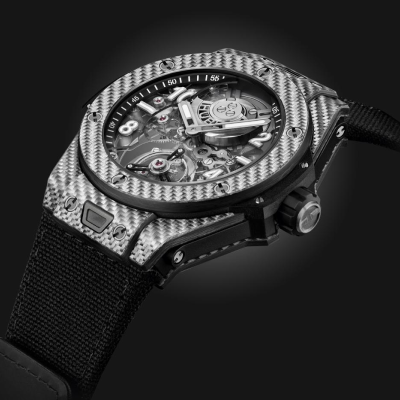
Hublot Big Bang Tourbillon Automatic
Splitting opinions worldwide, this luminous watch is called Big Bang for a reason. It’s a head-turning 44mm with a floating movement and is made from SAXEM (Sapphire Aluminium Oxide and Rare Earth Mineral).
-
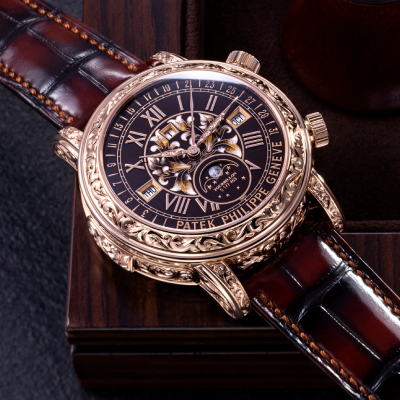
Patek Philippe Sky Moon Tourbillon
A work of art and a great watch rolled into it. The Sky Moon Tourbillon showcases a floral display and representation of the night sky on the dial. It rings in as Patek Philippe’s second most complicated watch - for now.
-
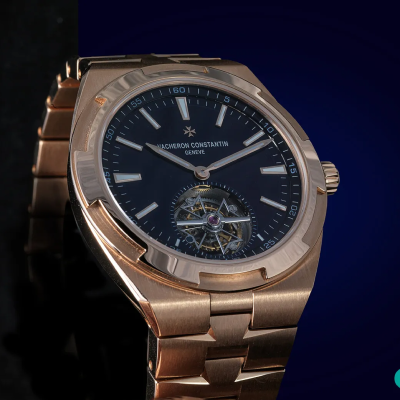
Vacheron Constantin Overseas Tourbillon
“A tribute to the spirit of travel”, the Vacheron Constantin Overseas Tourbillon has a cage inspired by the Maltese cross. A self-winding classic beauty with an exceptional calibre offering a power reserve of over 3 days.
What makes a tourbillon expensive?
Tourbillon movements are so rare and hypnotic that they’ve earned themselves a pretty price tag: Tourbillon watches start at 5 figures and reach into the millions. But if they offer no benefits beyond aesthetics, how did their value shoot up so highly?
- Tourbillons are some of the most difficult-to-make features, with only the most highly-trained and expert craftspeople being capable.
- They require expert hand assembly. The fiddly mechanism is tiny! It contains 40+ parts and still weighs less than a gram.
- They’re time-consuming to make and require a special set of tools.
- The movement is eye-catching and coveted.
- Tourbillon watches have become a prestige symbol.
The tourbillon’s reputation among high-end watch collectors has tempted some watchmakers on the sidelines to create more affordable tourbillon watches. And “affordable” isn’t an exaggeration this time; some are going for less than $100 (but they’re mostly from brands that aren’t worth mentioning).
What is the difference between a tourbillon and a flying tourbillon?
Since 1795, evolution after evolution has brought us different kinds of tourbillons. From double-axis to triple-axis tourbillons, quadruple tourbillons and even gyrotourbillons.
The type you’re likely to come across most often is the flying tourbillon. The difference between that and a standard tourbillon is the way they’re mounted. While a standard tourbillon uses a support system (a bridge or a cock) on both sides, a flying tourbillon is only supported on one side. As a result, it appears to be unconnected…or floating.
Your most hypnotic watch yet: Trilogy can help you buy a tourbillon watch
The tourbillon watch club is exclusive but we can get you on the list.
Call Trilogy on 0203 929 8227 or visit our store at 43 Davies St, London W1K 4LU, United Kingdom, to browse our collection of watches or ask about our sourcing service. With extensive industry contacts in place around the world, we’re confident we can source just about any watch you’re looking for - even if you can’t find it anywhere else.
TRILOGY ON YOUTUBE
Follow Trilogy on YouTube for regular updates and reviews of luxury watches and jewellery.








